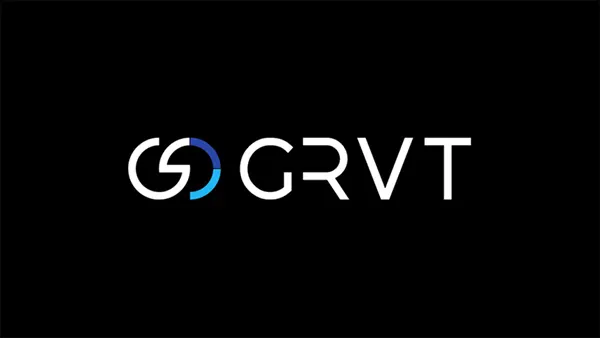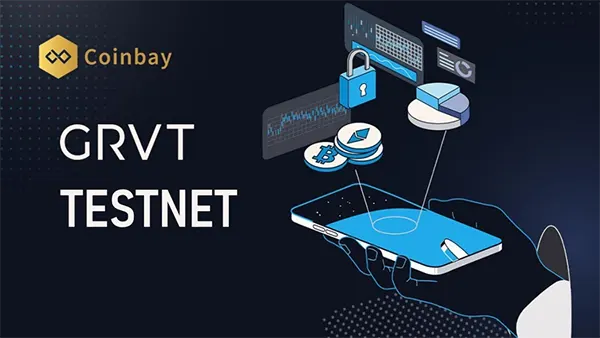
GRVT: A Next-Generation Hybrid Cryptocurrency Exchange
As digital asset markets mature, the demand for high-performance trading environments that combine transparency, security, and flexibility continues to rise. GRVT (short for Gravity) introduces itself as a pioneering hybrid cryptocurrency exchange built to deliver the best of both centralised and decentralised systems. Launched in 2024 and rapidly gaining traction in 2025, GRVT leverages advanced ZK-rollup technology, robust compliance infrastructure, and seamless UX to redefine the trading experience. This article explores what sets GRVT apart and why it’s being closely watched by institutional and retail players alike.
What Makes GRVT a Hybrid Exchange?
GRVT bridges the gap between traditional centralised exchanges (CEXs) and modern decentralised exchanges (DEXs) by offering the speed and order book depth of a CEX while retaining user custody through on-chain settlement. This approach is built on StarkWare’s ZK-rollup technology, which enhances scalability and reduces gas fees without compromising security. It enables users to retain full control over their assets while enjoying a professional-grade trading interface.
The exchange is non-custodial, meaning users do not have to deposit assets into a centralised wallet to begin trading. Instead, they sign orders with their wallets, and trades are settled on-chain, reducing counterparty risk and exposure to exchange hacks or insolvency. GRVT also offers high throughput, low latency, and zero gas fees for market makers, a crucial factor for professional traders and algorithmic strategies.
Unlike many DEXs that suffer from limited liquidity or clunky interfaces, GRVT provides an advanced matching engine, real-time data, and comprehensive API access. This hybrid infrastructure brings performance and security together in a way that reflects the growing expectations of a more mature crypto market.
Institutional-Grade Compliance and Architecture
GRVT stands out for its early commitment to global compliance standards. The exchange is headquartered in Abu Dhabi and operates under the regulatory framework of the Abu Dhabi Global Market (ADGM), one of the most progressive financial hubs in the Middle East. This regulatory positioning gives GRVT a legal foundation that appeals to institutional investors wary of legal uncertainty.
The platform implements a unique compliance model: users pass full KYC/AML screening during onboarding, while all trading actions are recorded and traceable, ensuring transparency and accountability. This is especially important for funds, trading firms, and corporate clients who need to demonstrate compliance with anti-money laundering laws and tax obligations.
Technically, GRVT is designed with modularity and redundancy. The core trading engine is hosted on secure cloud infrastructure, while settlements occur on the Ethereum Layer 2 network, ensuring both high availability and blockchain verifiability. This makes the exchange resilient, auditable, and future-proof.
Advanced Features and User Experience
GRVT’s interface is tailored for active traders, offering high-speed execution, customisable layouts, advanced charting tools, and risk management modules. Unlike many decentralised options, users can access tools such as stop-loss orders, trailing stops, and cross-margining within a single interface—an essential feature set for serious traders.
Moreover, GRVT includes support for both spot and perpetual futures trading. Perpetual contracts are settled using an on-chain funding mechanism, and GRVT has integrated Oracle solutions to ensure pricing accuracy. As of June 2025, the exchange supports over 30 trading pairs and continues to add more based on community and institutional demand.
The mobile and desktop experiences are designed for maximum fluidity, with Web3 wallet integration (such as MetaMask and hardware wallets) and minimal latency. The exchange also provides advanced analytics dashboards for performance monitoring and historical trade review.
Tokenomics and Staking Model
GRVT has introduced its native utility token, GRV, which plays a key role in the ecosystem. GRV holders benefit from reduced trading fees, access to exclusive features, and governance participation. A portion of the fees collected on the exchange is redistributed to GRV stakers, creating an incentive for long-term participation.
The tokenomics model avoids inflationary pitfalls by enforcing a capped supply and periodically burning a percentage of the fees. As of mid-2025, over 12% of GRV’s total supply is locked in staking contracts, reflecting early community confidence in the project’s vision.
Additionally, GRV will be used to reward market makers, bootstrap liquidity, and fund future protocol developments. The team has announced plans for a decentralised autonomous organisation (DAO) that will give token holders greater influence over future decisions, including listings and feature rollouts.

Security, Audits, and Community Transparency
GRVT has passed multiple third-party audits by firms including Trail of Bits and Quantstamp. Its smart contracts are open-source, with detailed documentation available for public scrutiny. By integrating Layer 2 security protocols and applying continuous pen-testing, GRVT positions itself as a robust trading venue with minimal technical vulnerabilities.
In terms of wallet security, GRVT uses a signature-only model. Users sign each transaction without transferring funds to a third party. This drastically reduces custodial risk. The exchange also features a comprehensive insurance fund to cover unlikely systemic failures, providing users with an additional layer of assurance.
Transparency is core to GRVT’s ethos. Monthly reports detail liquidity statistics, uptime, volume, and community grants. An active governance forum allows users to propose updates and discuss future directions. In June 2025, the team released a biannual roadmap update, confirming its intent to expand into tokenised securities and integrate with cross-chain liquidity networks.
Growth Outlook and Market Position
Since its beta release in Q4 2024, GRVT has onboarded over 200 institutional clients and processed over $3 billion in cumulative trading volume. Its strong regulatory positioning and hybrid architecture make it a favourite among funds seeking a middle ground between DEX safety and CEX speed.
With backing from key industry investors such as Dragonfly Capital, Electric Capital, and LayerZero Labs, GRVT is positioned for aggressive expansion. Future updates include mobile-only trading flows, additional derivatives products, and multi-chain liquidity bridges.
As of June 2025, GRVT is among the most promising next-gen exchanges in terms of growth rate and innovation pace. If it maintains its trajectory, GRVT could set new standards for hybrid exchange architecture in the evolving digital asset ecosystem.
